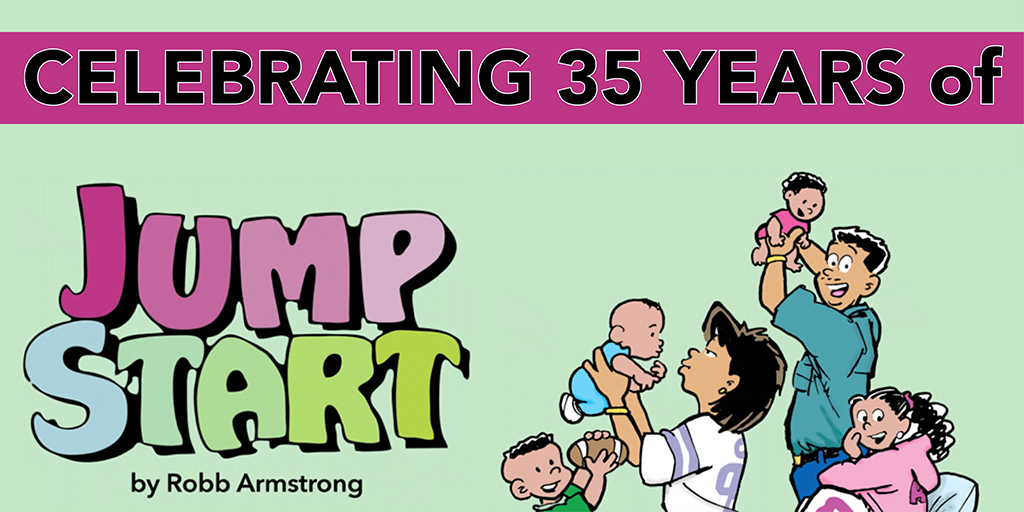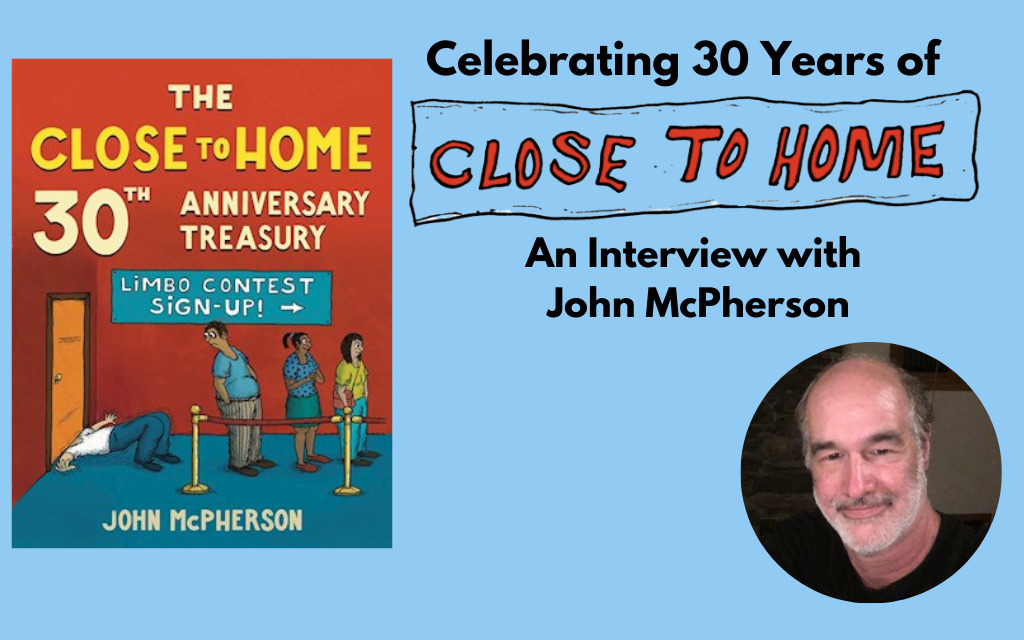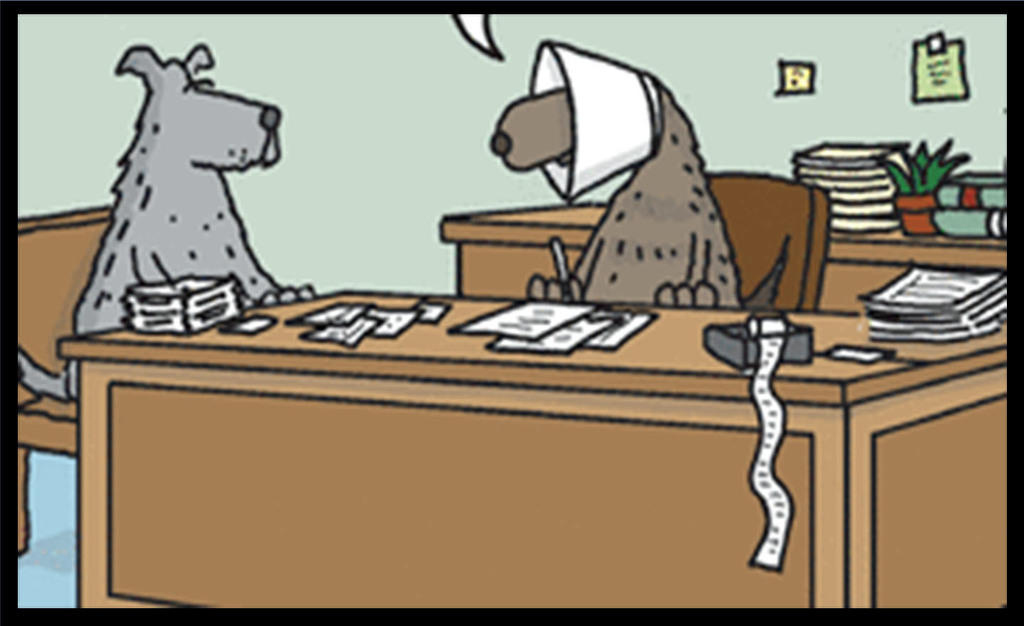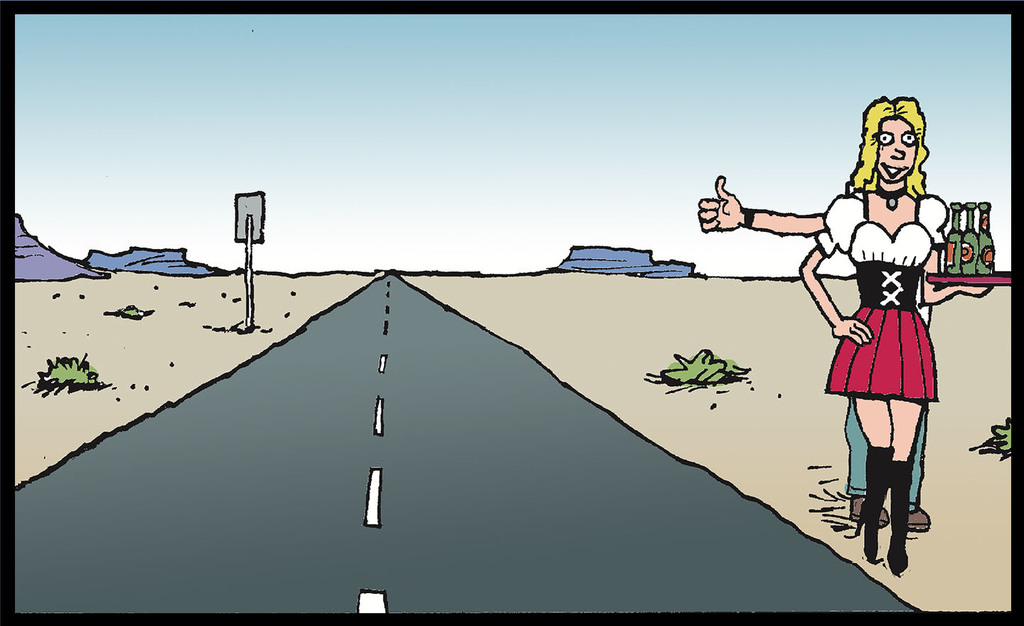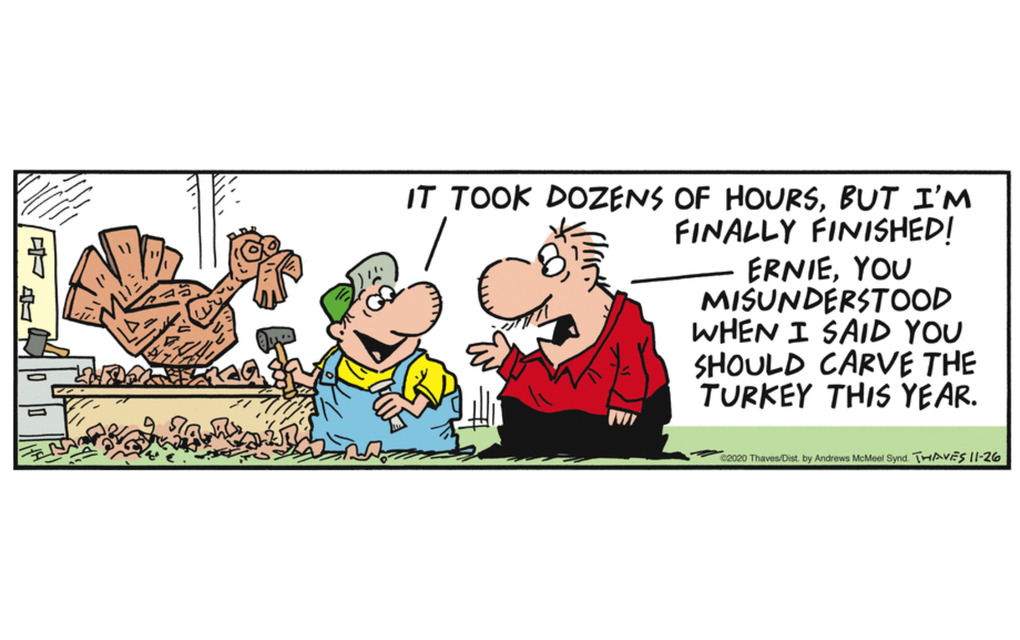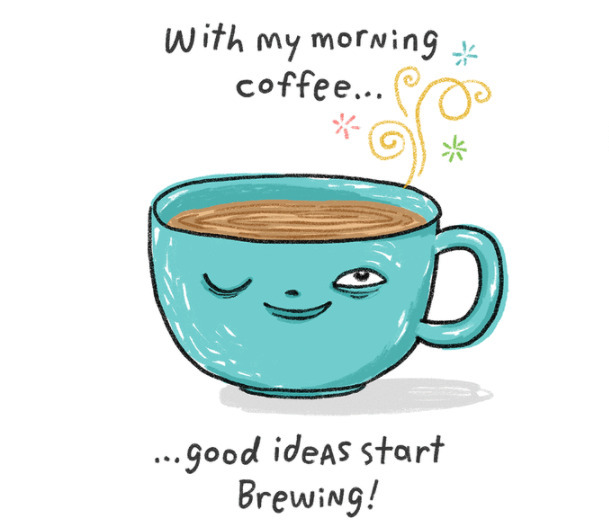Josh Shalek (Kid Shay Comics)
by GoComicsInherent talent has very little to do with making good comics. It's more about willpower and obliviousness.
One statement I hear a lot from readers is something to the effect of, "I wish I had the talent to draw comics." This strikes me as funny. (Don't worry, I'm not laughing at them.) If only naturally gifted people drew comics, there might be three cartoonists in the entire world. The rest of us have had to work at it for many, many years. I've been drawing comics since I was 10 and still haven't mastered the craft.
Garfield was the first comic strip I read. It was hilarious. I bought those skinny books about the fat cat, and laughed and laughed. At some point my parents must've alerted me to the treasure trove of comics printed daily in the newspaper.
For a while, I was content to read the daily strips. Then, for no reason that I can remember, I drew a comic strip of my own. It was during math class. I used my lined notebook paper to rule out three panels. Garfield usually had three panels, so I went with that.
Soon after, I began thinking of myself as a cartoonist. I always kind of thought some other occupation would come along to usurp it, but none ever did. I've always enjoyed the process of making stories one panel at a time.
If Garfield got me into reading comics, Calvin and Hobbes taught me how to make them. The totally insular world of Calvin and Hobbes drew me in. While reading it, I was living in Calvin's world. The storytelling was incredibly fun and imaginative and the art was stunning. I wanted to create a world like that.
Even though we've never met, Bill Watterson has been one of my greatest teachers. Fundamental things, like character design and development, story pacing, even how good a brush looks for inking. And I learned BATS AREN'T BUGS. Calvin and Hobbes is more than entertainment to me; it is part of who I am.
When I was growing up, there wasn't a wealth of easily accessible information about cartoonists-I learned by reading lots of comics. FoxTrot, The Far Side, Bloom County in the '80s. Get Fuzzy, Mutts, Bizarro in the '90s. There was plenty to learn just by studying what was on the page. How Bill Amend drew mouths, Gary Larson's hilarious way of drawing cows, Berkeley Breathed's crack comic timing or Patrick McDonnell's genius pacing and use of negative space-there is so much to learn simply by looking.
Of course, there were things that I missed because I couldn't see the process. It wasn't until college that I began drawing my originals at a comfortable, larger-than-print size. Fitting in text was a huge pain until I realized I could just make the panels bigger. For some reason, I used to draw action scenes very quickly, because, you know, it was happening so fast! I've learned to take my time. This period of trial and error might've been shortened had I taken comics classes, but figuring it out myself strengthened my resolve and made me happy when I found my own solutions.
For you comics scholars out there, here's my comics autobiography. I made comics for my middle-school newsletter. The less said about those, the better. It is a testament to my boundless optimism that I continued at all. In high school, I drew my first ongoing feature. Fool's Gold was about life in high school, and was informed by my reading of 1984 and Catch-22. It was deeply ironic. (It was also the '90s, so. You know.) In college, I drew Atticus and Glen, about a naive freshman and the wise squirrel who helps him navigate the uncharted waters of a liberal arts school in Ohio.
Upon graduating college, my plan was to become a syndicated cartoonist. I knew this could take a while. Bill Watterson got syndicated when he was 28. I figured I'd be doing good if it took me until 30. So, while my friends were going to grad school or New York (or both), I took lousy day jobs and used my free time to work on cartooning.
Fortunately, a local paper in Boulder, Colorado, where I moved, gave me space to run my first daily feature. The Family Monster ran in The Colorado Daily, a free paper distributed around town and mainly covering town and university events. The Family Monster wasn't intended as a weird post-college strip, but in many ways, it was. I learned a lot by drawing those characters for four years. I think of that as my grad school.
I retired The Family Monster for an idea I thought would be more friendly to newspaper syndication. Welcome to Falling Rock National Park ran, first in just The Colorado Daily. Later it was picked up by the McClatchy-Tribune Campus syndicate for college newspapers. I drew that strip for six years, submitting to national syndicates once a year.
It was during this time that Falling Rock made its film debut in a wonderful documentary called Dear Mr. Watterson. Since I owe much to Calvin and Hobbes for my cartooning chops, it was an honor to be featured in a documentary about the legacy of that strip. Seeing my name adjacent to Mr. Watterson's in the credits is beyond thrilling.
Although I never got the crucial "Yes" for syndication of Falling Rock, the "Nos" started to come with hand-written notes by editors. That was almost as good for my ego. People were taking notice of my efforts. Eventually Shena Wolf, an editor at Universal Press Syndicate (now Universal Uclick, operator of this here site) gave me a great offer. She wanted to run a book-length story I had done about friendly zombies in Egypt.
Tomb of the Zombies arose from the grave of an abandoned idea I had while drawing The Family Monster. Originally, it was about a man raising zombies and teaching them to dance. His long-term goal was to ship them to Las Vegas to star in a show, making him rich. The story was rock-solid (obviously), but it was far too long to tell in daily installments. When I worked it out I thought I could tell it in a month. By that time, the few readers I had would undoubtedly have moved on.
In 2010, like half the country, I was out of work. I finally had the time to devote to a long-term project. Unlike a daily strip, characterized by space restrictions and deadlines, Tomb of the Zombies would be as long as needed and I would finish it when I was done drawing the last page. I approached it like a short story in terms of storytelling, although it turned out to be a bit longer. When I want to sound pretentious, I call it my graphic novella.
It was while drawing Tomb that I developed my current three-step drawing process. On copy paper, I sketch the page, full-size, in pencil. I then trace onto Bristol board using a non-photo blue pencil. Then I ink, using a couple different size brushes and India ink, over the blue lines. For lettering and detail work, I use either a Staedtler or PITT pen. It is far from fast, but I've been happier with the results since I started doing it this way. Apparently it takes me three times to draw something good.
When I began writing Tomb, zombies were quickly eclipsing vampires as the pop culture icon-du-jour. What I saw as missing was zombies with human personalities, zombies with a sense of humor. Even Shaun of the Dead used zombies as mindless (or, semi-mindless) drones. They were hungry: They ate.
Zombies have not always been this way. In Zora Neale Hurston's Tell My Horse, she wrote about real zombies she met in Haiti. Voodoo zombies are slaves to the person who rises them. They do yard work. They eat people food, not people-as-food. This fit in nicely with my idea of a mad scientist who wants his own zombie menagerie. The zombies in my story are regular people who have been resurrected against their will to do the bidding of a loopy, hat-loving scientist.
Tomb of the Zombies takes a lot from the zombie movies it is subverting. It features a strong female protagonist (Kate Crane, on her summer break from college), a mad scientist, a shadowy quasi-militaristic organization. Most of the story occurs in Egypt, a place rich in history, much of it still unknown.
The comics I love now are both older and newer than the ones I read growing up. Cul de Sac, surely one of the all-time greats, is a must-read. Tom the Dancing Bug does what The Daily Show cannot. The K Chronicles is so witty I cannot believe it. I finally got into Peanuts and now know why Baby Boomers won't stop talking about it. Pogo is dense and lyrical. It can be as political as Doonesbury one day, completely silly the next. Krazy Kat is the absolute spirit of comics: dreamlike, insular, abstract.
There is so much I love about comics. When I was a kid, I wanted to be a comic strip artist. I thought that was the only way for me. Now I know there are so many ways to make comics, and they're all awesome. I am thrilled to be a part of GoComics and I hope you enjoy reading Tomb of the Zombies.


